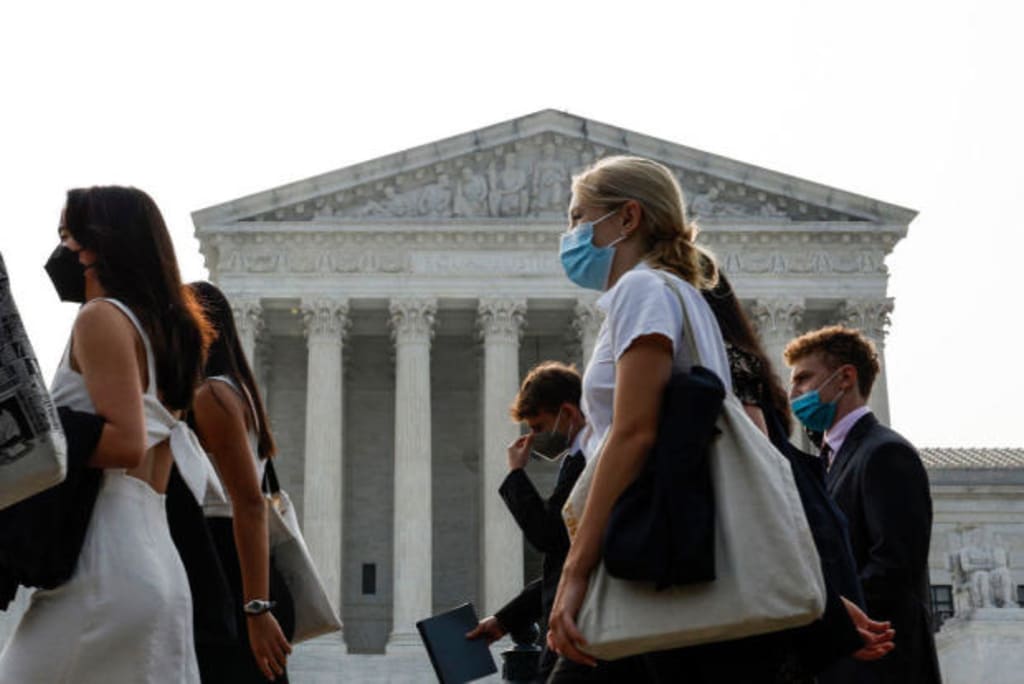-Affirmative action-
Supreme Court rejects affirmative action, ending use of race as factor in college admissions

The University of North Carolina and Harvard College's racially discriminatory admissions procedures were found to be unconstitutional by the Supreme Court in a decision that effectively ended affirmative action in higher education. The effects of this choice are anticipated to be seen throughout all schools in the country.
Chief Justice John Roberts wrote the majority opinion for the court, which was divided along ideological lines with a 6-3 decision in the University of North Carolina case and a 6-2 decision in the Harvard case (Justice Ketanji Brown Jackson withdrew). The majority decision was co-authored by Justices Clarence Thomas, Samuel Alito, Neil Gorsuch, Brett Kavanaugh, and Amy Coney Barrett. Justice Sonia Sotomayor read a dissenting opinion out loud for the first time, and Justice Thomas also read a concurring opinion.
According to Chief Justice Roberts' opinion, the admissions policies at Harvard and UNC cannot be defended in light of the Equal Protection Clause. He claimed that these initiatives lack significant endpoints, utilize race negatively, lack defined and quantifiable aims, and entail racial stereotyping. Roberts underlined the need of basing student evaluations on their unique experiences rather than their race.
Roberts did add that colleges may still take into account an applicant's explanation of how race influenced their life, such as instances of discrimination or sources of inspiration. Military academies were excused from the ruling because they can have different objectives.
The majority judgment, according to Justice Sotomayor, disregards the Fourteenth Amendment's guarantee of equality, she vehemently disagreed. She stated that the choice goes back many years.
The judgment represents a major divergence from earlier affirmative action rulings by the Supreme Court, notably the pivotal Grutter v. Bollinger case from 2003. Justice Thomas argued in his concurring opinion that the Grutter judgment was essentially overruled even if Chief Justice Roberts' conclusion did not directly invalidate it. The conservative majority, according to Justice Sotomayor, has overturned long-standing tradition.
This ruling fits within a trend of precedent-setting by the conservative majority of the Supreme Court, which was formed by the selections made under the administration of the previous President Donald Trump, including the recent overturning of the historic Roe v. Wade decision.
Universities will be significantly impacted by the abolition of affirmative action in higher education, especially in terms of the presence of Black and Hispanic students. More than 40% of colleges and 60% of elite institutions weigh race in some way when making admissions choices. Race-conscious admissions, according to the Biden administration and advocates of affirmative action, are essential for boosting diversity and providing equitable access for underrepresented groups.
The rejection of affirmative action by the court was denounced by President Biden, who also underlined the value of racial diversity in advancing not only universities but the entire country. He emphasized the need to keep fighting for justice and equal opportunity, saying that the court's ruling does not sum up what America is all about.
The cases brought before the Supreme Court involved Harvard and the University of North Carolina and were filed by Students for Fair Admissions, founded by conservative activist Ed Blum. The organization claimed that these schools' admissions policies discriminated against Asian-American applicants. Lower courts had previously upheld the policies, citing their compliance with the Supreme Court's precedent in Grutter.
Both Harvard and UNC responded to the ruling, with UNC's Chancellor Kevin Guskiewicz stating that the school will take necessary steps to comply. Harvard officials reaffirmed their commitment to diversity and expressed the need to determine how to preserve their values within the new precedent set by the court.





Comments
There are no comments for this story
Be the first to respond and start the conversation.